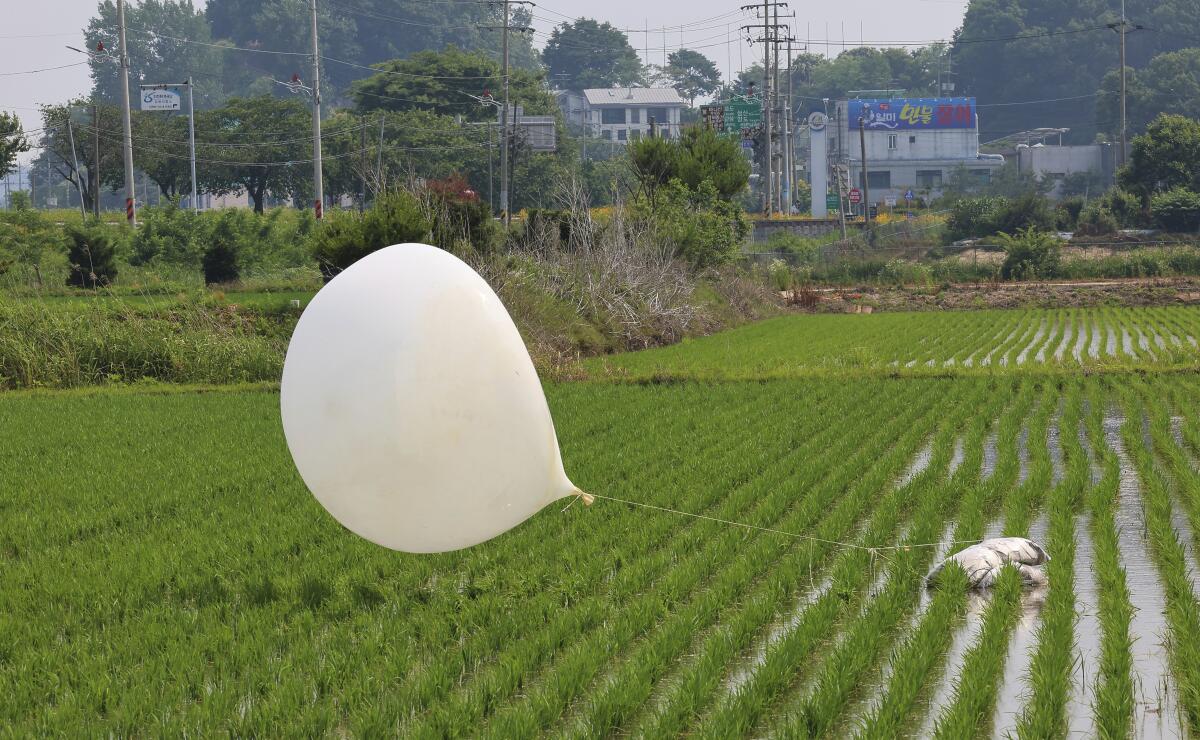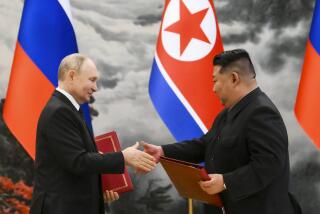Seoul says North Korea has flown more trash balloons toward South Korea

SEOUL — South Korea’s military says North Korea is again flying balloons likely carrying trash toward the South, adding to a bizarre psychological warfare campaign amid growing tensions between the war-divided rivals.
South Korea’s Joint Chiefs of Staff said Saturday that the winds could carry the balloons to regions north of the South Korean capital, Seoul. Seoul City Hall and the Gyeonggi provincial government issued text alerts urging citizens to beware of objects dropping from the sky and report to the military or police if they spot any balloons.
There were no immediate reports of injuries or property damage.
North Korea in recent weeks has flown more than 2,000 balloons carrying waste paper, cloth scraps and cigarette butts toward the South in what it has described as a retaliation toward South Korean civilian activists flying anti-Pyongyang propaganda leaflets across the border.
Pyongyang has long condemned such activities as it is extremely sensitive to any outside criticism of leader Kim Jong Un’s authoritarian rule.
North Korea last flew balloons toward the South on July 24, when trash carried by at least one of them fell on the South Korean presidential compound, raising worries about the vulnerability of key South Korean facilities. The balloon contained no dangerous material and no one was hurt, South Korea’s presidential security service said.
South Korea, in reaction to the North’s balloon campaign, activated its front-line loudspeakers to blast broadcasts of propaganda messages and K-pop songs. Experts say North Korea hates such broadcasts because it fears it could demoralize front-line troops and residents.
The Koreas’ tit-for-tat Cold War-style campaigns are inflaming tensions, with the rivals threatening stronger steps and warning of grave consequences.
Their relations have worsened in recent years as Kim continues to accelerate the North’s nuclear weapons and missile program and issue verbal threats of nuclear conflict toward Washington and Seoul. In response, South Korea, the United States and Japan have been expanding their combined military exercises and sharpening their nuclear deterrence strategies built around U.S. strategic assets.
Experts say animosity could further rise later this month when South Korea and the United States kick off their annual joint military drills that are being strengthened to deal with the North’s nuclear threats.
The resumption of the balloon campaign comes as North Korea struggles to recover from devastating floods that submerged thousands of homes and huge swaths of farmland in areas near its border with China.
North Korean state media said Saturday that Kim ordered officials to bring some 15,400 people displaced by the floods to the capital city, Pyongyang, to provide them better care, and that it would take two or three months to rebuild homes in flood-hit areas.
He has so far turned down aid offers by traditional allies Russia and China and international aid groups, insisting that North Korea is capable of handling the recovery on its own. He accused “enemy” South Korea of a “vicious smear campaign” to tarnish the image of his government, claiming that the South’s media have been exaggerating the damage and casualties caused by the floods.
Kim Tong-Hyung writes for the Associated Press.
More to Read
Sign up for Essential California
The most important California stories and recommendations in your inbox every morning.
You may occasionally receive promotional content from the Los Angeles Times.










